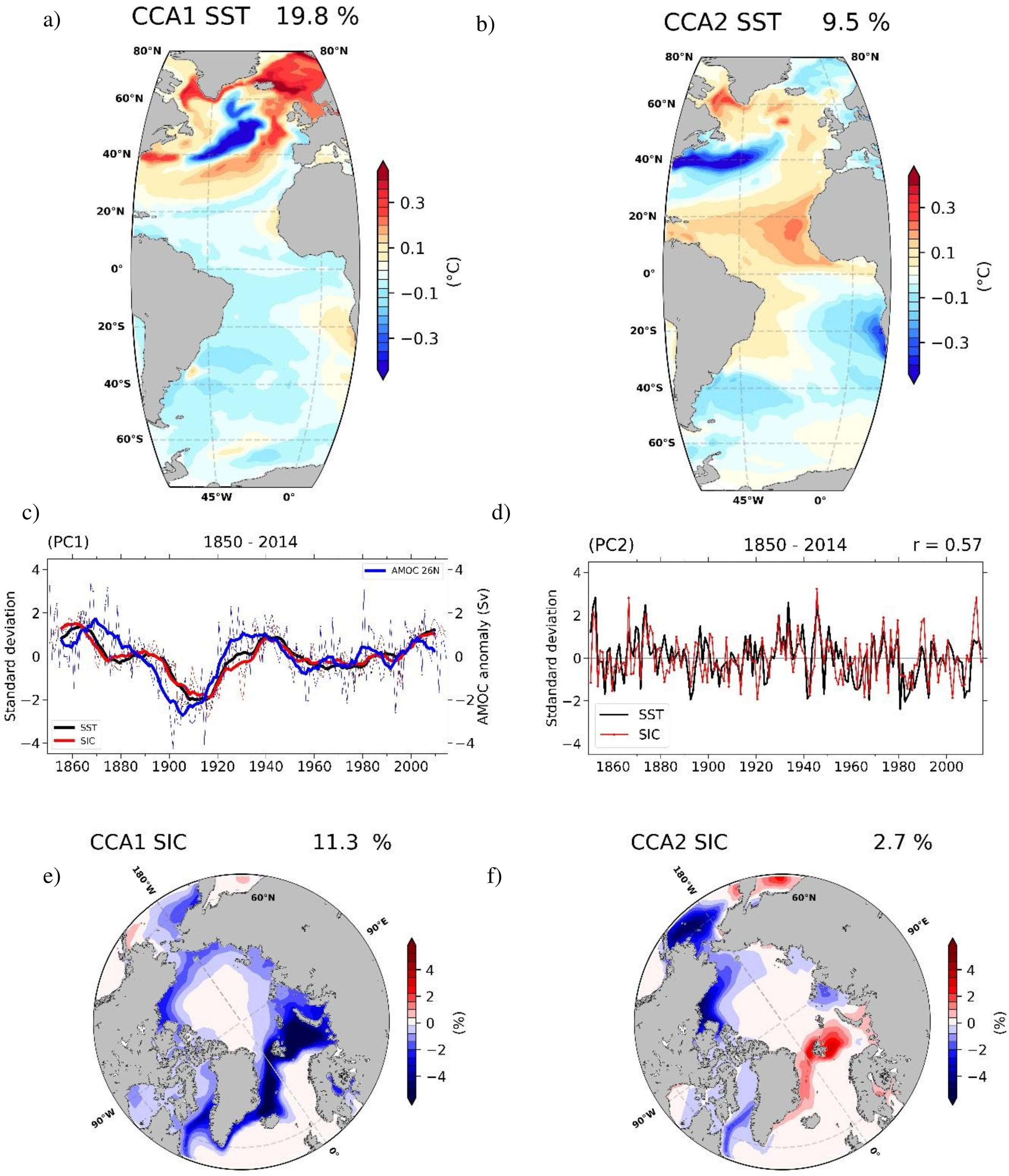
The third and final stage of the project focused on analyzing coupled sea surface temperature (SST) and sea ice concentration (SIC) variability using AWI-ESM2.1, the Alfred Wegener Institute’s fully coupled Earth System Model.
AWI-ESM2.1 is a state-of-the-art climate model participating in CMIP6 and includes fully interactive ocean, atmosphere, sea ice, and biogeochemistry components, making it a powerful tool for understanding long-term climate variability.

CCA was applied to detrended historical (1850–2014) SST and SIC anomalies from AWI-ESM2.1 to reveal dominant coupled modes of variability:
First CCA Pair:
Shows a strong North Atlantic SST warming pattern linked to significant Arctic sea ice loss, together explaining over 30% of variance.
The associated time series are significantly correlated (r = 0.84) and show a marked co-variability with the model’s simulated Atlantic Meridional Overturning Circulation (AMOC), indicating a critical role of ocean circulation in shaping polar climate trends.
Second CCA Pair:
Reveals a subpolar SST–SIC connection with a lower explained variance (≈ 16%), likely capturing internal variability modes such as multidecadal oscillations.
Despite minor model biases, AWI-ESM2.1 was able to reproduce the spatial structure and temporal evolution of the observed SST–SIC relationships, providing confidence in its ability to represent coupled ocean–ice processes under historical forcing. These results emphasize that both anthropogenic forcing and natural variability are essential for interpreting observed Arctic changes.